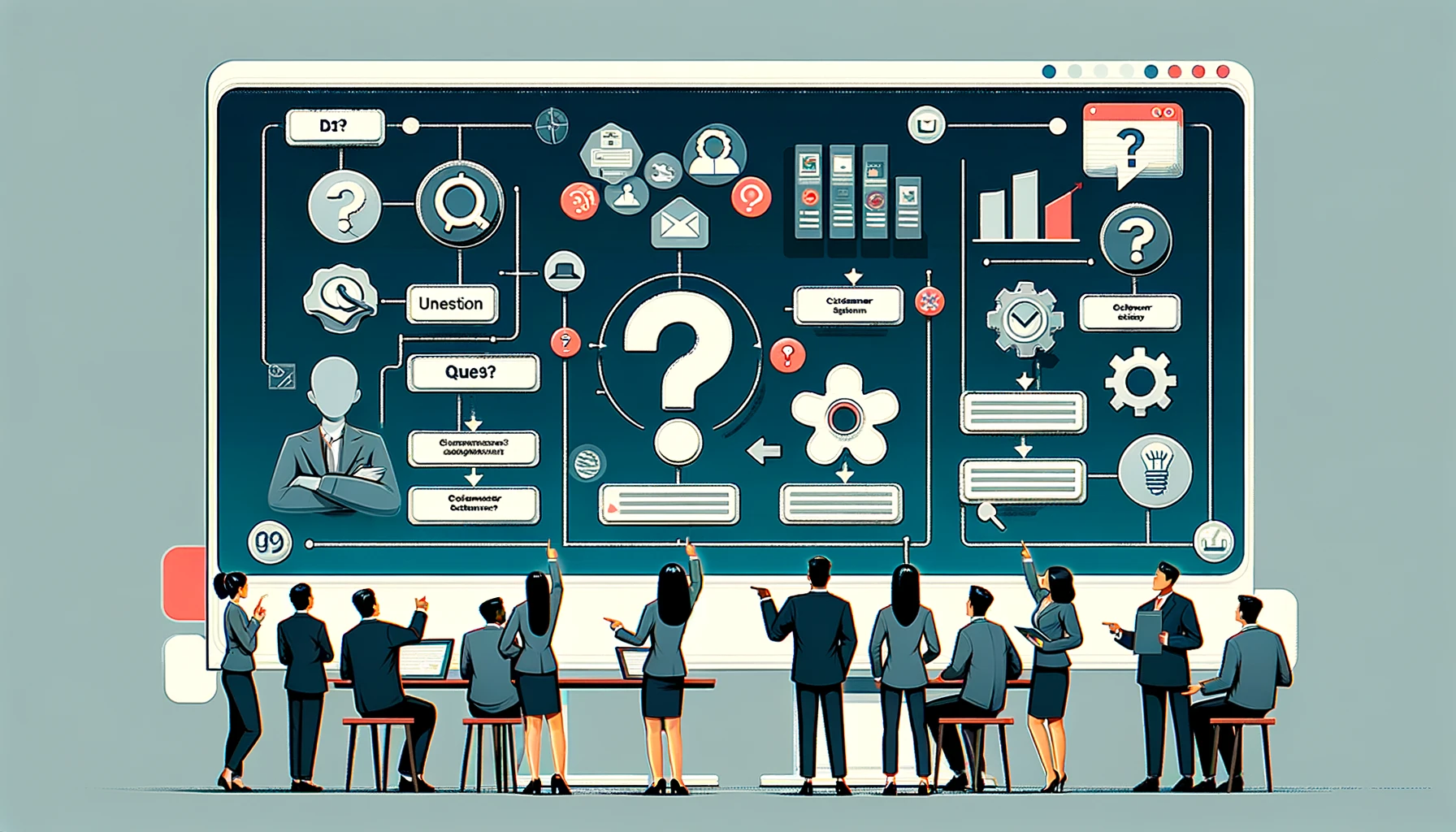Customer Master Data Management Strategies for 2024

Explore cutting-edge strategies for effective Customer Master Data Management to streamline your business operations in 2024.
Unlocking the Power of Customer Data
In the digital age, harnessing customer data is pivotal for business growth. Customer master data management (CMDM) is your key to unlocking a treasure trove of insights that can propel personalized marketing, sharpen sales tactics, and enhance customer service.
When CMDM is leveraged effectively, it transforms raw data into a clear picture of your customer base. This allows for targeted strategies that resonate with each segment, leading to increased engagement and conversion rates. However, the challenge lies in consolidating data from various touchpoints and maintaining its quality.
A robust CMDM system ensures that every piece of customer information is accurate, accessible, and secure. By standardizing data entry processes and employing real-time updates, businesses can maintain a single source of truth for all customer-related data. This not only streamlines operations but also facilitates compliance with data protection regulations.
To visualize the impact of an integrated CMDM strategy, consider the following comparison:
| Benefits of CMDM | Impact on Business |
|---|---|
| Accurate Customer Profiles | Personalized Customer Interactions |
| Efficient Data Management | Streamlined Operations |
| Regulatory Compliance | Reduced Legal Risks |

Implementing a CMDM system can be a game-changer, allowing businesses to tap into data-driven opportunities and build lasting customer relationships. Stay ahead of the curve by embracing these strategies and watch your business thrive in 2024 and beyond.
The Pillars of Customer Master Data Management
Customer master data management is underpinned by several core principles that ensure the integrity and usefulness of customer data. These pillars are the foundation of a successful CMDM strategy, and they include Data Quality, Integration, Governance, and Consistency.
Data Quality is paramount; without it, all subsequent efforts are futile. It’s about ensuring that the data is accurate, complete, and timely. Integration refers to the seamless merging of data from various sources, providing a unified view of the customer. Governance involves setting policies and standards for data management, ensuring compliance and security. Lastly, Consistency across all channels and touchpoints guarantees that every department has the same up-to-date customer information.
By adhering to these principles, businesses can create a CMDM framework that not only enhances customer experiences but also drives operational efficiency and informed decision-making.

Prioritize these pillars to ensure your CMDM strategy is robust and effective, paving the way for a data-centric future that leverages customer information to its fullest potential.
Enhancing Customer Experience through Data Accuracy
In the quest for customer satisfaction, data accuracy is not just a goal; it’s a necessity. High-quality customer master data management (CMDM) plays a crucial role in delivering a superior customer experience. By ensuring that every piece of customer information is precise, businesses can tailor their services and communication to meet individual needs and preferences.
Imagine the benefits when customer interactions are based on reliable data—service becomes more personal, offers are more relevant, and trust is built. This precision in understanding and responding to customer needs can lead to significant improvements in customer loyalty and retention.
To emphasize the importance of data accuracy, let’s look at its direct impact:
| Metric | Without Accurate Data | With Accurate Data | Improvement |
|---|---|---|---|
| Customer Satisfaction | Low | High | Significant Increase |
| Marketing ROI | Suboptimal | Optimized | Better Allocation |
| Operational Efficiency | Hindered | Enhanced | Streamlined Processes |

By investing in CMDM solutions that prioritize data accuracy, businesses can forge stronger connections with their customers and drive growth. Accurate data is not just an asset; it’s the cornerstone of a truly customer-centric approach.
With CMDM, you don’t just manage data; you create experiences that resonate, building a brand that customers trust and advocate for.
Integrating Customer Data Across Business Systems
Integrating customer data across various business systems is a linchpin for achieving a holistic customer view. Effective integration enables organizations to synchronize data across platforms, ensuring that every interaction with a customer is informed and cohesive. With the right CMDM tools, data silos are dismantled, allowing for seamless communication and a unified customer journey.
Imagine a scenario where sales, marketing, and customer service all access the same up-to-date customer profile. The result? A harmonious customer experience. This synchronization not only boosts efficiency but also elevates the customer’s perception of your brand, as they receive consistent and relevant communications across all touchpoints.
To illustrate the benefits of integrating customer data, consider this table:
| Benefits of Data Integration | Impact on Business |
|---|---|
| Unified Customer View | Enhanced Cross-Department Collaboration |
| Real-Time Data Access | Faster Response Times |
| Elimination of Data Redundancies | Cost Savings |

Adopting an integrated approach to CMDM is not just about technology; it’s about creating a responsive and agile business that can adapt to customer needs swiftly. Make integration a priority and watch as your business delivers exceptional customer experiences at every turn.
Measuring Success in Master Data Management
Evaluating the effectiveness of your Customer Master Data Management (CMDM) initiatives is crucial for continuous improvement. Success in CMDM is multifaceted, encompassing data quality, user satisfaction, and operational impact. By setting clear metrics and benchmarks, you can gauge performance, identify areas for enhancement, and justify investments in CMDM solutions.
Metrics such as data completeness, accuracy, and timeliness are direct indicators of CMDM health. Additionally, user feedback can provide insights into system usability and data utility. On the operational front, measure the impact on customer engagement and retention rates to understand CMDM’s contribution to business goals.
Here’s a snapshot of key performance indicators:
| Metric | Before CMDM | After CMDM | Improvement |
|---|---|---|---|
| Data Completeness | 75% | 95% | +26.7% |
| User Satisfaction | 6.5 | 8.5 | +30.8% |
| Customer Retention | 80% | 90% | +12.5% |

Tracking these metrics can spotlight your CMDM system’s strengths and uncover potential gaps, allowing you to make data-driven decisions for strategic improvements. Remember, a successful CMDM strategy is one that evolves with your business needs and the ever-changing data landscape.
FAQs
What is Customer Master Data Management?
Customer Master Data Management (CMDM) is a method that defines and manages the critical data of an organization to provide, with data integration, a single point of reference. CMDM involves processes, governance, policies, standards, and tools that consistently define and manage the customer data to ensure it is accurate and accessible across the organization.
How Does Customer Master Data Management Benefit a Company?
CMDM offers numerous benefits including improved customer relationship management, enhanced data quality, elimination of redundant and duplicate customer data, and consistent customer experiences across various channels. It also enables better segmentation, targeted marketing, and compliance with data protection regulations.
Can Customer Master Data Management Reduce Operational Costs?
Yes, by creating a single, reliable source of customer data, CMDM can significantly reduce operational costs. It streamlines data management processes, reduces the need for data cleansing, and minimizes the likelihood of errors. This leads to more efficient business operations and can also reduce the costs associated with poor data quality.
What Are the Challenges in Implementing Customer Master Data Management?
Challenges in implementing CMDM include data silos within an organization, varying data formats, data quality issues, and gaining organizational buy-in. Additionally, integrating CMDM with existing IT systems can be complex. Ensuring that all stakeholders understand the importance of CMDM and are committed to the change is crucial for successful implementation.
How Does CMDM Integrate with Other IT Systems in an Organization?
MDM systems are designed to integrate with other IT systems such as CRM, ERP, and BI tools. This integration is facilitated through the use of APIs, middleware, or data import/export features. The goal is to ensure that customer data flows seamlessly between systems, maintaining data integrity and providing a unified view of the customer across the organization.
Read more about low-code platform ozma.io
ERP for Small Business UK: Streamlining Operations
ERP for Manufacturing: Optimizing Production Efficiency





